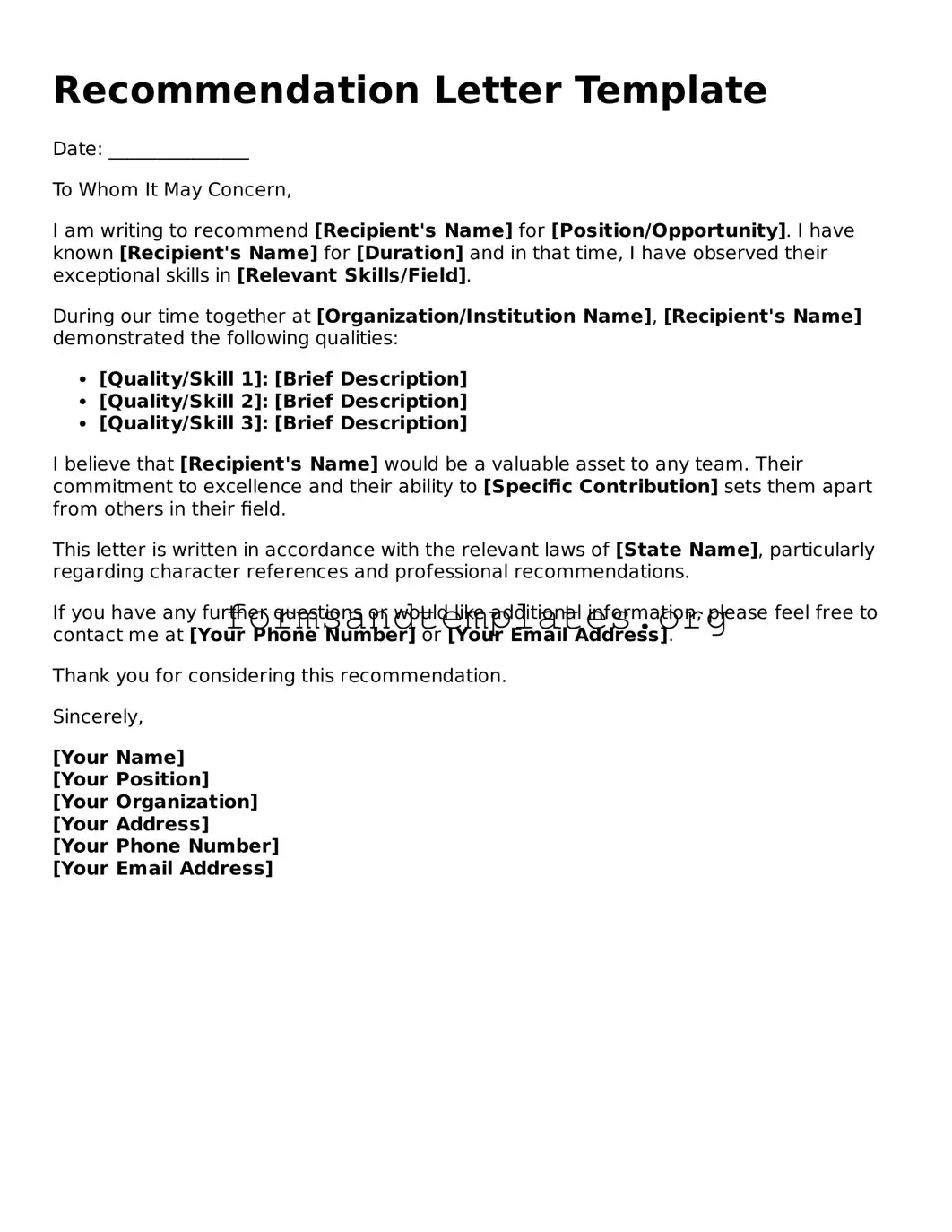Recommendation Letter Template
Date: _______________
To Whom It May Concern,
I am writing to recommend [Recipient's Name] for [Position/Opportunity]. I have known [Recipient's Name] for [Duration] and in that time, I have observed their exceptional skills in [Relevant Skills/Field].
During our time together at [Organization/Institution Name], [Recipient's Name] demonstrated the following qualities:
- [Quality/Skill 1]: [Brief Description]
- [Quality/Skill 2]: [Brief Description]
- [Quality/Skill 3]: [Brief Description]
I believe that [Recipient's Name] would be a valuable asset to any team. Their commitment to excellence and their ability to [Specific Contribution] sets them apart from others in their field.
This letter is written in accordance with the relevant laws of [State Name], particularly regarding character references and professional recommendations.
If you have any further questions or would like additional information, please feel free to contact me at [Your Phone Number] or [Your Email Address].
Thank you for considering this recommendation.
Sincerely,
[Your Name]
[Your Position]
[Your Organization]
[Your Address]
[Your Phone Number]
[Your Email Address]
